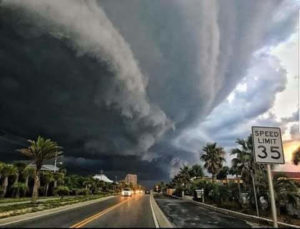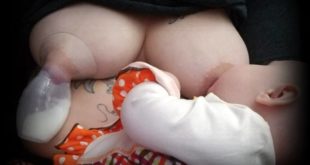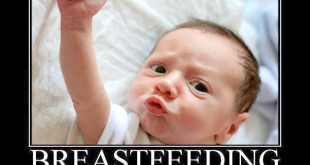Ask Anne…
 Every time I hear about a natural disaster or weather emergency, I think about how hard it must be for formula feeding moms to make sure their baby has formula and clean water to mix it with during the crisis. Having a safe, built in food supply for your baby is yet another advantage of breastfeeding, but one we moms hope we never have to think about.
Every time I hear about a natural disaster or weather emergency, I think about how hard it must be for formula feeding moms to make sure their baby has formula and clean water to mix it with during the crisis. Having a safe, built in food supply for your baby is yet another advantage of breastfeeding, but one we moms hope we never have to think about.
If you’re evacuating the area, one of the last things on your mind is saving food in the fridge, but if you are in a situation where your power goes out, you may be in a panic about losing the stash of frozen milk you worked so hard for.
Here’s some information that may help you salvage some of your “liquid gold”.
Above all, stay safe.
Question: Help! We had a big storm here and the power went off. I’m afraid that I might lose my freezer stash of breast milk. I’m going back to work next week, and it took me months of pumping to store up all that milk. Is there anything I can do save my frozen breast milk during a power outage?
Answer: Try not to panic. Unless the power is out for extended periods of time and the milk is thawed out for more than a couple of days, chances are that you can save it.
Here are some guidelines about how to save your milk during power outages:
- If you know ahead of time that your power may go out, freeze plastic bags full of water and use them to fill the empty spaces in the freezer. Put the frozen milk toward the center of the freezer instead of against the walls. A full freezer holds its temperature longer than one that is partially empty.
- If you have access to a generator, use it to keep the food in your freezer frozen.
- If one of your neighbors still has power, see if they will let you store your milk in their freezer until your power comes back on.
- If you do lose power, try to keep the milk from thawing . Fill empty spaces in your freezer or cooler with dry ice, “blue ice,” bags of ice, or snow. Covering the cooler with towels or blankets will help keep it insulated.
- Put separate bags of breast milk into larger bags or plastic container to keep them from leaking in case they start to defrost.
- Open the freezer door as little as possible. According to the USDA, “a full freezer will hold the temperature for approximately 48 hours (24 hours if it is half full) if the door remains closed.”
- If there is still a lot of snow on the ground, you can store the milk in a snow bank, out of the sun, until the power comes back on, then return it to the freezer as soon as possible. You can also pack the freezer or cooler with snow to keep the milk frozen.
- As long as the breast milk is still slushy or has ice crystals in it, then it isn’t considered defrosted, and it can be refrozen, even if more than 48 hours has gone by. Milk that is partially thawed and then refrozen is safe to eat. It may lose some of its live immune factors, but is still better for your baby than formula, which doesn’t have any antibodies and live cells to begin with.
- A 2006 study looked at the effects of refreezing previously frozen milk. Researchers took frozen breast milk and thawed it, refroze it, refrigerated it and left it out at room temperature. They concluded that “Breast milk is fairly robust and does not grow bacteria easily nor lose vitamins A and C or free fatty acids to any degree that would harm a full term baby.” They also found that the vitamin content was adequate for all the samples of refrozen milk, and none of the samples shad unsafe levels of bacteria.
- Based on this research, your milk should be safe to use even if the milk has completely thawed, and there are no ice crystals left. If your aren’t sure about whether the milk has ‘spoiled’, see how it smells. If it’s spoiled, it will smell bad, just like cow’s milk that has been left out too long. Sometimes milk that has been frozen and thawed may have a ‘soapy’ smell, due to its fat content, but this isn’t the same as a spoiled milk smell, and doesn’t mean the milk is unsafe. You might want to leave as much thawed milk out as you think you can use within 24 hours or so, then refreeze the rest.
- These guidelines apply to healthy full term babies. If you have a preemie or a sick baby with an immune disorder, consult your doctor. He may recommend that the thawed breast milk be used within 24 hours and not refrozen.
Anne Smith, IBCLC
Breastfeeding Basics
References
- Infant Feeding and Support in Disasters: United States
- US Centers for Disease Control
- US Department of Agriculture
- HMBANA’s best practice, 2005.
- Effect of environmental conditions on unpasteurized donor human milk: David Rechtman, MD, Martin L. Lee and H.Berg
According to the USDA, “a full freezer will hold the temperature for approximately 48 hours (24 hours if it is half full) if the door remains closed.”
 Breastfeeding Basics
Breastfeeding Basics




